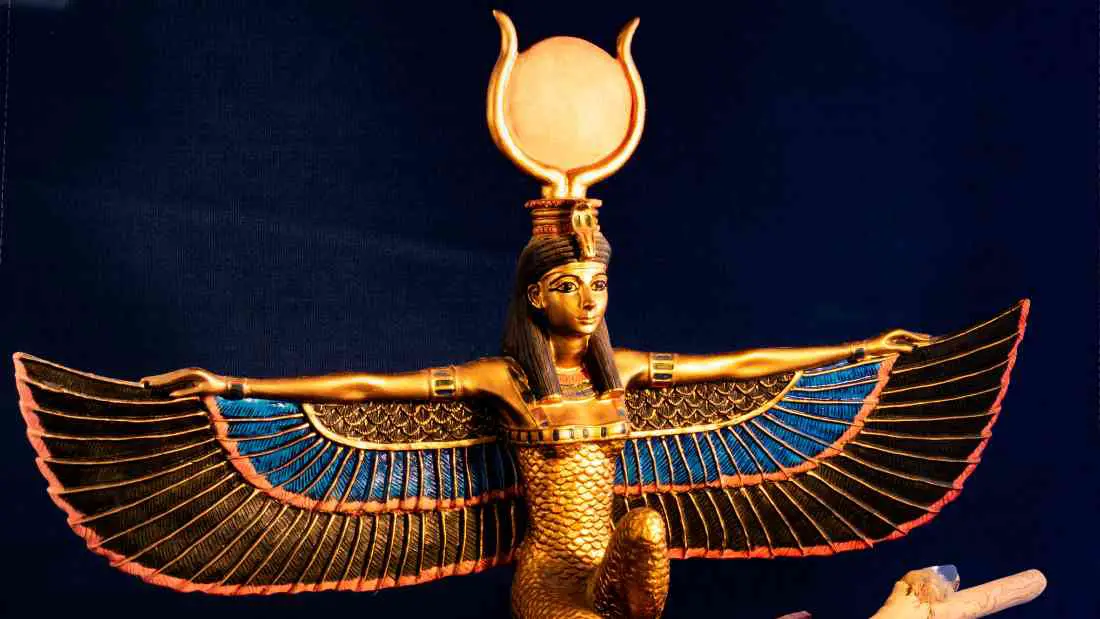The Egyptian gods Hathor and Isis, embody different aspects of love, fertility, and protection, weaving a complex narrative of divine influence in both the earthly and heavenly realms.
This post explores the fascinating roles and stories of Hathor and Isis, providing insights into why these figures were central to the concept of love and devotion in Ancient Egypt.
Hathor: The Goddess of Love and Joy
Hathor is often regarded as one of the most important and widely worshipped gods in ancient Egypt.
She was the goddess of love, music, and joy, and is frequently depicted as a woman with the ears of a cow, often with cow horns and a sun disk.
Her connection to bovine imagery is deeply rooted in the idea of nurturing, fertility, and caring, all of which are integral values associated with love.
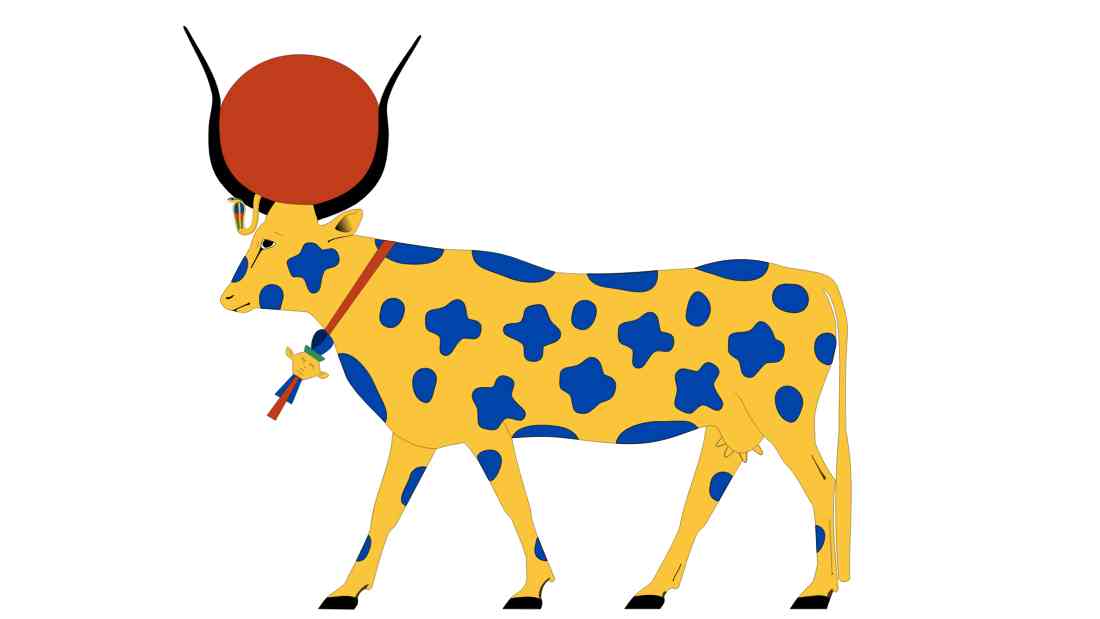
The Origin and Symbols of Hathor
The origins of Hathor’s worship can be traced back to the earliest dynasties of Egypt. Her name, which means “House of Horus,” suggests an association with the sky and motherhood.
She was the mother of Horus, the falcon-headed god, representing kingship, and as such, was seen as a protective deity of Egyptian rulers.
Symbols associated with Hathor include the sistrum, a sacred musical instrument used in her worship, and the menat necklace, which was also used in her festivals and symbolizes fertility and sexuality.
Her worship was not confined to temples but was celebrated across Egypt, from common folk to royalty, reflecting her universal appeal.

Role in Mythology and Culture
Hathor’s influence extended beyond love and music. She was also a goddess of the afterlife, associated with rebirth and regeneration, which are also linked to the cycles of nature and creation.
Her joyful and nurturing demeanor made her a popular figure in festivals and other public events, often invoked to bring happiness and prosperity.
Several myths depict Hathor’s role in facilitating love, particularly in the Kha and Merit myth, where she blesses a couple with fertility. Her warmth and compassion towards humans underscore her image as a maternal figure, emphasizing her role as a god that brings people together through love and companionship.
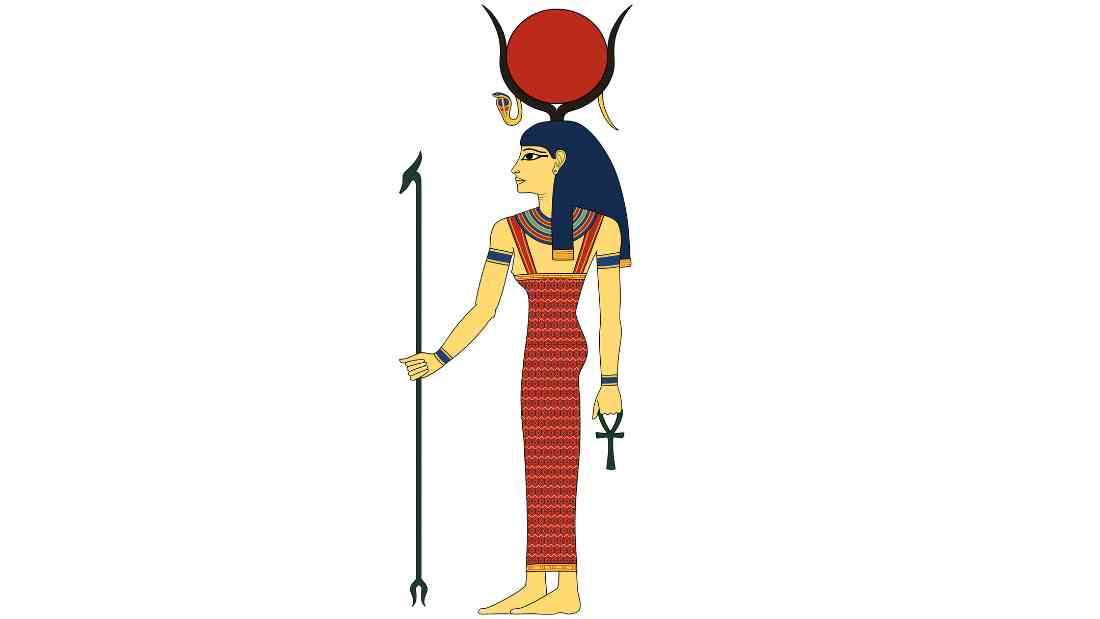
Depiction of Hathor
Hathor’s depiction in ancient Egyptian art and mythology signifies her multifaceted roles and attributes. She is most commonly portrayed as a beautiful woman with the ears of a cow, symbolizing her nurturing nature and connection to fertility and motherhood. This unique combination of human and bovine elements showcases her as a divine maternal figure, capable of providing love and care.
In some instances, Hathor is also shown as a full cow, emphasizing her role as a provider, not just of love, but of sustenance and prosperity. The imagery of Hathor wearing a sun disk between her cow horns further connects her to the celestial realm, highlighting her divine status and her role as the eye of the sun god Ra, a protector and bringer of light.
This blend of earthly and heavenly attributes in Hathor’s depiction underscores her importance in ancient Egyptian culture as a goddess who transcends the boundaries between the cosmic and the terrestrial, embodying the essence of love, joy, and protection.
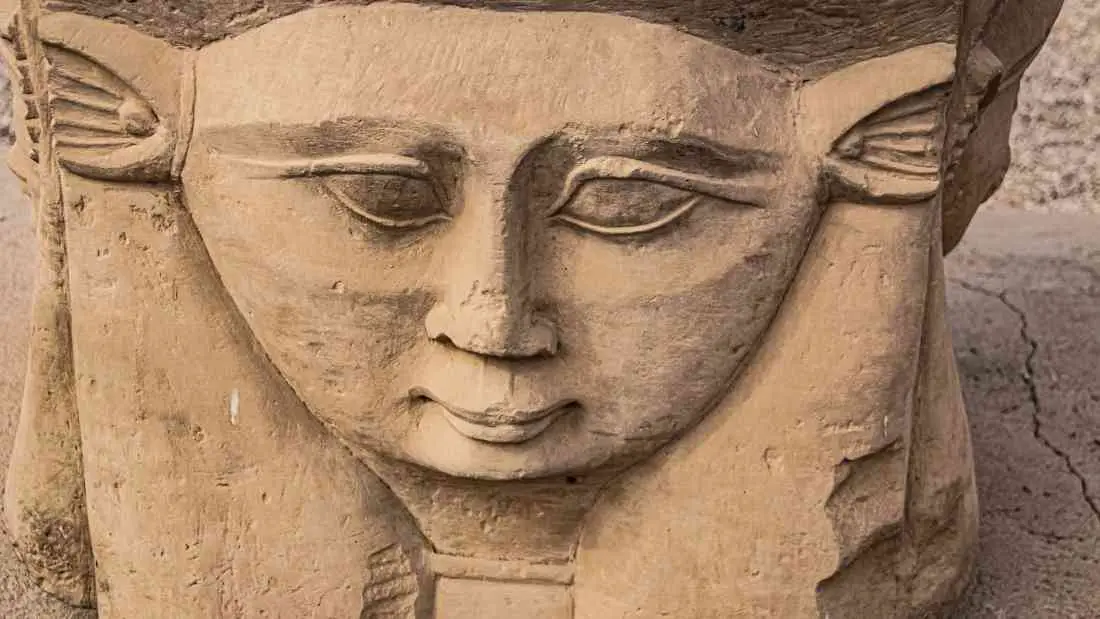
Temples Devoted to Hathor
The temples devoted to Hathor stand as a testament to her significance in ancient Egyptian religion and culture.
The Temple of Hathor at Dendera, for instance, is one of the best-preserved and most significant temple sites from ancient Egypt. This architectural marvel not only served as a place of worship but also as a center for music and dance, reflecting her domains over joy and festivity.
Pilgrims from across the land would gather here to partake in rituals and celebrations, seeking Hathor’s blessings for love, fertility, and protection.
The temple walls are adorned with intricate carvings and hieroglyphs that tell tales of Hathor’s mythological exploits, offering a glimpse into how deeply integrated she was in the lives of the Egyptian people.
The dedications to Hathor in these sacred spaces underscore her venerable position within the pantheon and highlight the multifaceted nature of her worship.
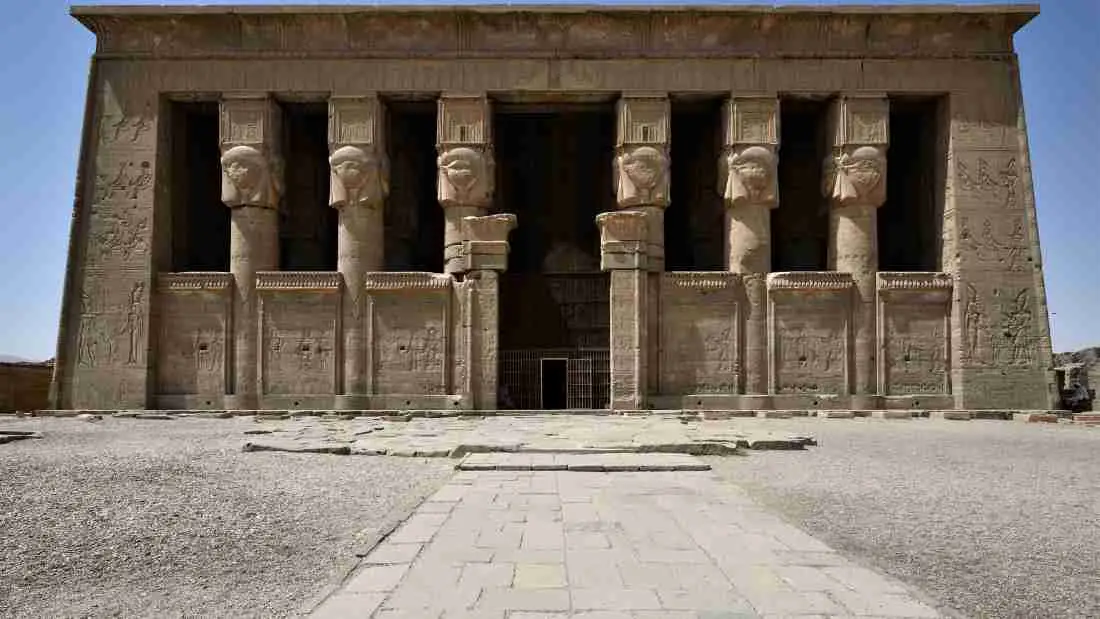
Isis: The Divine Mother and Goddess of Magic
Isis, the sister and wife of Osiris, is perhaps the most renowned goddess of ancient Egypt. She is revered as the epitome of motherhood, magic, and fertility and is often depicted wearing a throne as her headdress, symbolizing her role as the queen of the gods.
The Multifaceted Significance of Isis
Isis’s story is one of determination and hope, a tale that resonates with the struggles of human life.
After her husband Osiris is killed and dismembered by his brother Set, Isis works a miracle, piecing Osiris back together and using magic to conceive their son, Horus.
This represents her transcending the boundaries of death and creating new life, mirroring the cycle of nature and the promise of regeneration.
Isis is also associated with the spread of agriculture and the domestication of animals, linking her to nurturing and sustenance.
In the narrative, her efforts reflect her divine purpose as a nurturer not only of gods but of humanity itself, making her a symbol of love that transcends all barriers.
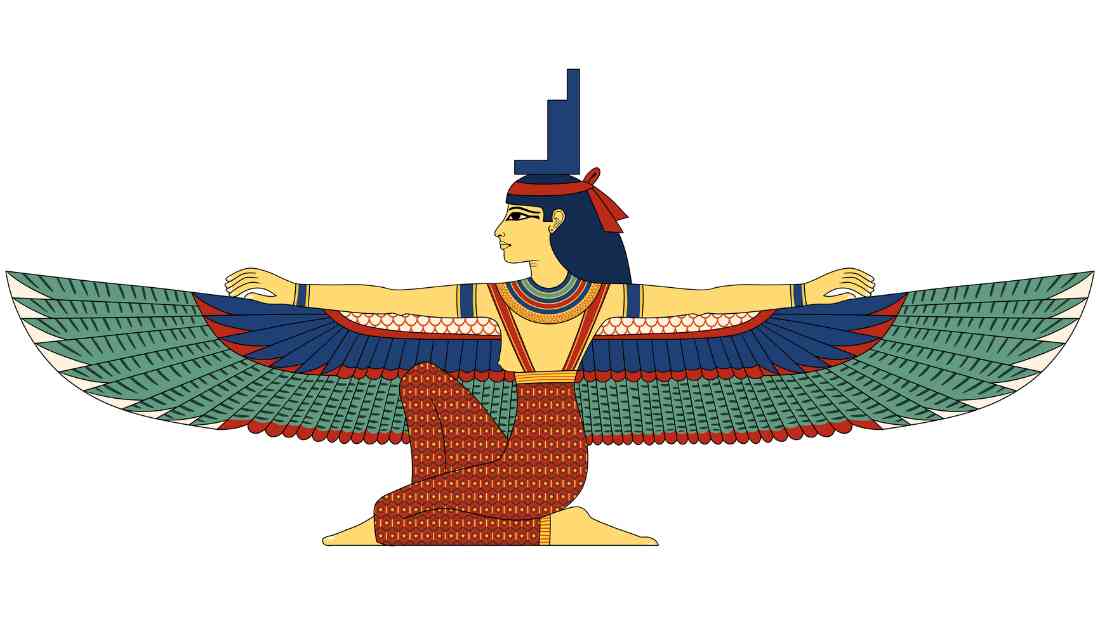
Depiction of Isis in Ancient Egyptian Art and Culture
Isis was depicted in various forms throughout ancient Egyptian art, each illustrating her multifaceted roles and attributes. Commonly, she was portrayed as a regal woman, holding a scepter and ankh, symbols of power and life, respectively. Often, she wore a throne-shaped headdress, reinforcing her status as the queen of the gods and the mother of Horus, the future king.
In some artworks, Isis is shown with outstretched wings, symbolizing her role as a protector and embracer of nature and humanity. This imagery underscored her nurturing nature and her capabilities to shield and care for her followers.
Additionally, in murals and carvings, Isis is often seen performing acts of magic, emphasizing her mastery over the mystical forces of the universe.
These depictions in temples, tombs, and papyri not only worshipped her divine presence but also served as talismans for protection, fertility, and rebirth, reflecting the profound impact she had on the lives and afterlives of the ancient Egyptians.

Temples Dedicated to Isis
The worship of Isis was widespread across Egypt, highlighted by numerous temples dedicated to her honor. These sacred sites were not only centers of worship but also places of healing, learning, and the celebration of the mysteries of life and rebirth.
Among the most significant is the Temple of Philae. Located on an island in the Nile, the temple complex was believed to be one of the burial sites of Osiris, making it a significant pilgrimage site for those seeking Isis’s blessing.
The temple walls are etched with stories of Isis’s quests and her instrumental role in the cycle of life and death, underscoring her significance in the Egyptian pantheon.
Pilgrims from all walks of life visited these temples to offer their petitions for protection, fertility, and guidance, demonstrating the widespread veneration for Isis as the divine mother and guardian.
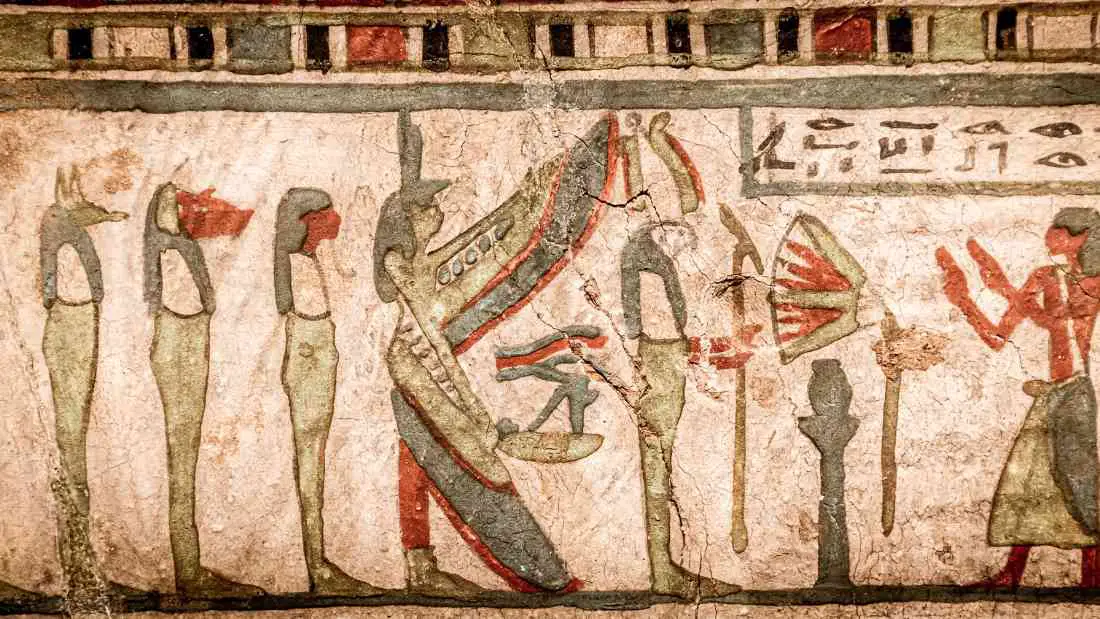
Comparison and Contrast
While both Hathor and Isis are Egyptian gods associated with love and motherhood, they bear significant differences in their domains and depictions.
Hathor is more directly connected with the joy and pleasure aspects of love, often represented in the context of music and celebration.
Isis, on the other hand, represents the more profound, nurturing, and enduring qualities of love that encompass the concepts of magic and motherhood. Her story, particularly her role in the creation and protection of Horus, underlines her maternal and protective attributes, which are significant when considering her as a goddess of love.
Despite these differences, the two ancient Egyptian gods also share common ground in their roles exemplifying and promoting love and harmony. Their combined influence touched various aspects of personal and communal life in ancient Egypt, shaping the beliefs and behaviors of its people.
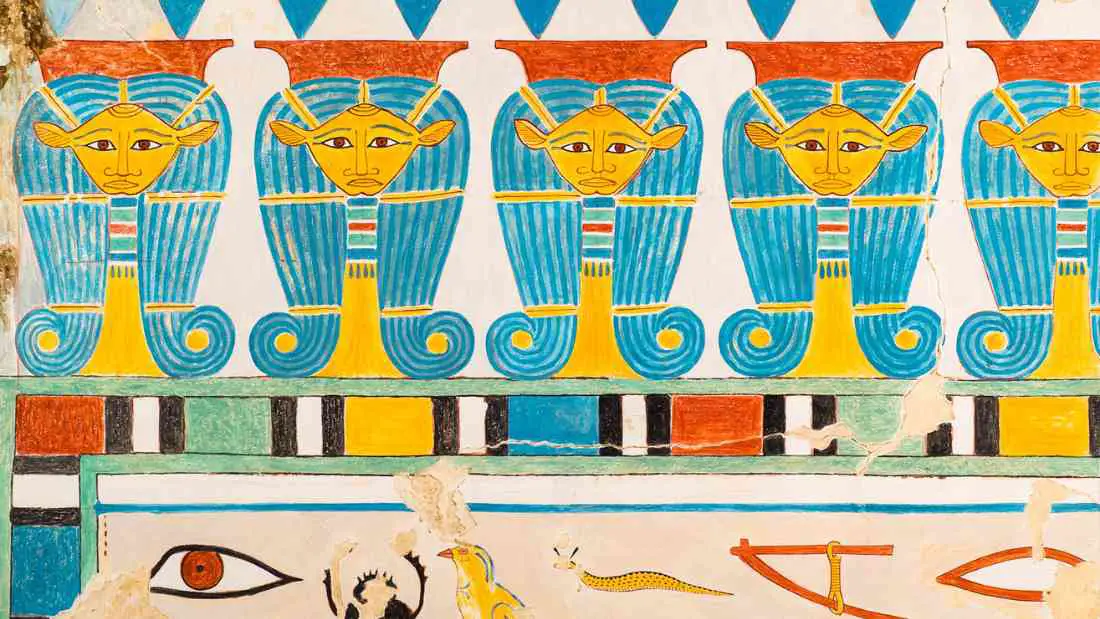
Concluding Thoughts on the Egyptian Gods of Love
In conclusion, Hathor and Isis, two paramount gods in Ancient Egyptian mythology, embody the multifaceted nature of love, fertility, and protection.
Hathor, celebrated for her associations with joy, music, and celebration, exemplifies the lively and nurturing aspects of love. Through her symbolism and festivals, she invites us into a world where love is expressed freely and abundantly.
Isis, in contrast, offers a narrative of steadfastness and resilience, showcasing love’s enduring and transcending power. Her tales of revival and protection highlight the depth and strength of maternal love and the magic inherent in nurturing life.
Posts About the Egyptian Pantheon of Gods
The Pantheon of Ancient Egyptian Gods – A Comprehensive Guide
The Wrath of Montu – The Mythology of the Egyptian War God
Egyptian God Ammit – The Eater of Hearts in Ancient Egyptian Mythology
The Nightly Journey of Khonsu – The Ancient Egyptian God of the Moon
Ihy – The Joyful Ancient Egyptian God of Music
Min – The Ancient Egyptian God of Fertility
The Egyptian God Anubis – His Evolution from Son of Ra to Protector of the Dead
Unraveling the Mysteries of Babi – The Ancient Egyptian Baboon God
Ra, the Egyptian Sun God – Symbolism and Significance in Ancient Egyptian Culture
Sobek: The Ferocious Crocodile God of Ancient Egypt
The Enigmatic Mythology of Horus, the Egyptian Sky God
The Egyptian God Set – Protector of the Desert and Lord of Conflict
The Ancient Egyptian God Medjed: The Guardian of Osiris and the Afterlife
Anput, the Wife and Female Version of Anubis
Selket – The Scorpion Crowned Egyptian Goddess
Shu – The Egyptian God of Air, Wind, Peace and Lions
Hapi the Androgynous Ancient Egyptian God of the Nile
The Egyptian Sky Goddess Nut: Myth and Symbolism
The 42 Laws of Maat: The Moral Principles of the Ancient Egyptians
The Ancient Egyptian Goddess Mut: The Maternal Power in Egyptian Mythology
The Warrior Goddess: Neith in Ancient Egyptian Mythology
The God Bes: The Joyful Dwarf Deity in Ancient Egyptian Culture
The Egyptian Gods of Love: Hathor and Isis in Ancient Egyptian Mythology
Confronting the Serpent: The God Apep, the Nemesis of Ra in Egyptian Myth

